Economy
Canada is not a serious country… Danielle Smith
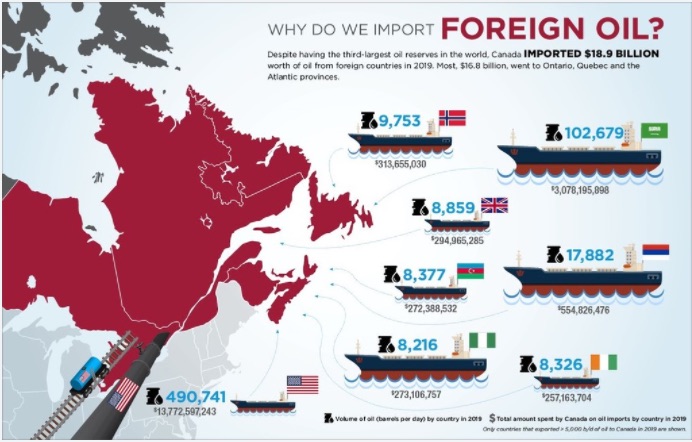
From Danielle Smith
I read an infographic that said Canada has bought $13 billion worth of petroleum products from Russia since 2000 – we buy from them at a rate of $550 million a year. What the hell are we doing?
The situation for Ukraine looks very grave indeed. Most commentators thought Vladimir Putin was going to “liberate” the two Russia friendly break off republics of Donetsk and Luhansk. What a surprise to the world to find Russian soldiers in Kyiv among other incursions.
It is pretty clear the Russian leader intends to take all of Ukraine.
But we also must not be naïve about Putin’s aspirations. A Polish friend of mine – who remembers watching Russian tanks roll into her town outside her street when she was seven years old – is under no illusions about how far Putin intends to go.
She fully expects Belarus, Lithuania, Latvia, Estonia, Kazakhstan and possibly Moldova to be next. She believes Putin wants to assemble the Soviet Union 2.0, with the ultimate aim of controlling the energy supply to the rest of the world.
So how does this play out?
Just like you I’ve been trying to sort through the conflicting media coverage to find out what is really going on. If indeed there are Ukraine substates that genuinely want to be independent, I don’t have a particular problem with that. As I said in a Locals post, post WWII the powers that be made a lot of blunders redrawing the map of Europe and the Middle East, cramming people together under a national flag even if they hated each other, so perhaps some aspirations for independence are legitimate. But it’s clear that Putin’s aspiration goes far beyond Crimea, Donetsk and Luhansk. It appears now that he wants the whole thing. But why?
First off, though it’s sad to say, there hasn’t been much honest reporting about Ukraine and Russia starting in the Trump years so almost everything you read will be through the lens of people who hate Trump (who clearly understood Putin’s strength and saw no need to antagonize him) and Biden (whose family had strange dealings in Ukraine no one wants to talk about).
In addition there is so much propaganda floating around the web I’d be reluctant to retweet any stories of “bravery” unless they’ve been verified. Here’s a good summary of the lies so far: The Ghost of Kiev, the woman with the sunflower seeds, footage of things being shot down or blown up – so far most of these stories are outright falsehoods or images from video games or prior conflicts. The “Russian Warship Go Fuck Yourself” holdouts was partly true: yes they said it, but they didn’t die in a missile attack. They were all apprehended and taken alive.
So know that you have to read everything knowing that the writer is trying to manipulate you. I’m just trying to figure out what is actually going on. It’s not easy.
To that end…
The mainstream view as reported on BBC, is that Russia feels threatened by a modern Ukraine and irrationally believes it has been taken over by extremists and Nazis. I guess calling one’s political opponents “Nazis” is the new all-purpose smear being used by Russian Presidents and Canadian Prime Ministers alike to justify war measures. In any case, this analysis left me unsatisfied as it seemed a bit shallow and one-sided like so much of MSM these days.
Social media isn’t doing much better, and the commentariat seems to think this is the time to practice their best pop culture zingers. It’s kind of humiliating to read this piece that calls out the Harry Potter references, the self-care links and the demands to “deplatform” Russia: “If the West saw Ukraine and its cause as truly important, something worth paying a price to assist, they would sanction Russia’s energy sector. But they do not (even the Globalist American Empire must sometimes face reality). So instead, we get a parade of symbolic sanctions, passive-aggressive gestures of anger and hostility. In fact, the tactics the GAE uses against Russia — social ostracisim, deplatforming, and performative public condemnation — are the same feminine tools that it uses domestically to ruins the lives of people who use a politically incorrect word or donate to the wrong protest.” Ouch.
Here’s a video from a podcaster imbedded in Kyiv who says openly, “you’ll probably think I’m a Russian stooge” so he may indeed be a Russian stooge, but he explains why he thinks Russia (so far) has been restrained in its attack. He believes Ukrainians are fleeing because Ukraine President Volodymyr Zelensky is endangering them, by putting Kalashnikovs in the hands of untrained civilians who are going to be killed when confronted by professional Russian soldiers, and mandating military service for every man aged 18 to 60. He does not believe the Russians intend to cause mass casualties or destruction, but that they will kill if someone is pointing a gun at them, which will allow more reports depicting Putin’s viciousness.
He also explains how important Kyiv is to the Russian foundational story. As far as Putin is concerned, Ukraine is Russia, and he expected to be treated as a liberator when he arrived. He also outlined the different military tactics of Russia to explain why the West is saying that Russia is losing. When the US enters a country they do scorched earth and blow everything up – roads, bridges, electrical grids, water plants and so on. The fact that Putin is not doing that is being perceived as weakness. But if Putin wants Ukraine to be part of Russia permanently, it would make no sense to destroy everything. That doesn’t engender good feelings. Putin wants a puppet regime in Ukraine friendly to Russia’s interests – he doesn’t want to raze the joint or blow it smithereens.
Finally, this piece helped put a lot into perspective for me. “Ukraine’s Deadly Gamble” by Lee Smith has the ring of truth about it. He depicts it thus: “…(T)he Ukrainians made a geopolitical blunder that statesmen will study for years to come: A buffer state had staked its future on a distant power that had simply seen it as an instrument to annoy its powerful neighbor with no attachment to any larger strategic concept that it was willing to support.” They were a pawn in the game to help discredit Trump with the Russian collusion story, then when Trump started poking around to find out what the Bidens were up to in Ukraine, they played a willing role to aid his impeachment. Now they find out the Americans just aren’t that into them after all.
In the end, mid-size powers sleeping next to giants have to realize that their continued ability to remain independent is measured by whether they are perceived as antagonistic to the giant’s interests. If the situation was reversed – if Canada started cozying up to Russia and helping to sabotage US presidents to curry favour with Russia – I don’t think it would go well for us either. Maybe not full scale invasion, but the Americans hold life or death power over our economy so it wouldn’t be a wise move. Sad that regular citizens become the collateral damage in the decisions of their elected leaders. But that’s why elections matter.
If Canada was a serious grown-up country with a serious grown-up leader we’d be able to say “we can help” without being laughed off the world stage. We can help, in a very practical way. We can help wean the world off Russian oil and natural gas. We could ask Quebec to stop thinking only about itself for a change and reverse its announced ban on oil and natural gas extraction. Trudeau could declare multiple projects in the global interest and work with First Nations partners to complete Transmountain Pipeline and build Northern Gateway, work with Biden to build Keystone XL and with the provinces of QB and NB to build Energy East. He would use his powers under the Constitution to tell Quebec they can not block LNG Export from Saguenay, and he’d post a sentry of protectors for Coastal Gas Link to make sure it gets completed too.But look at this silliness: “despite the fact that 18 LNG export terminals have been proposed in Canada over the years, and 24 long-term LNG export licenses have been granted since 2011, a grand total of zero have been built.” We have failed the world with Trudeau’s anti-carbon-dioxide obsession. Let’s not forget it.
Canada is key to energy security and affordability for North America and our European allies, and we could hit Russia where it hurts. If we wanted to be a meaningful player on the international stage we would embrace it.
Instead we have a federal Environment Minister who made his name scaling the CN Tower and Ralph Klein’s house to oppose fossil fuels, and we’ve joined the Build Back Better brigade pretending the world can survive on wind turbines and solar panels alone.
Canada is not a serious place and our friends in Eastern Europe are now paying the price for it. Such a tragedy.
For more from Daniel Smith
|
|
|
|
|
|
|
Business
The painful return of food inflation exposes Canada’s trade failures

This article supplied by Troy Media.
Canadians are feeling the pinch as Ottawa’s trade blunders and a weak dollar drive grocery bills higher
Almost a year ago, Canada’s Food Price Report projected that food inflation in 2025 would range between three and five per cent. We now stand squarely at four.
For consumers, it’s been a bruising year. After months of relative calm, grocery prices have surged again since spring, driven by tariffs, weather disruptions and a weakening Canadian dollar.
Between March and September, food inflation jumped sharply across several everyday staples. Coffee and tea prices rose by nearly 15 percentage points, sugar and confectionery climbed by more than three, while beef and condiments each increased by about one.
These aren’t luxury goods—they’re breakfast-table essentials. Canadians are paying more for their morning coffee, family barbecues and pantry staples than they were just six months ago.
When compared with other G7 countries, Canada’s performance stands out—and not in a good way. Japan currently faces the highest food inflation rate at 7.2 per cent, followed by the United Kingdom at 5.1 per cent. Canada sits third at 3.8 per cent, the only G7 country to post three consecutive monthly increases. Italy follows closely at 3.7 per cent, while the United States, Germany and France are all below Canada at 3.2, 2.9 and 1.7 per cent, respectively. For an advanced, food-producing nation, this is not a comfortable position.
Much of the renewed pressure can be traced back to trade policy. The counter tariffs introduced in March, combined with new U.S. measures, have quietly inflated costs across the entire food chain. Tariffs are by nature inflationary: they disrupt market efficiencies, raise input prices and trigger retaliatory actions that make goods more expensive on both sides of the border. What begins as a political statement quickly becomes an economic burden, felt most acutely in grocery aisles.
The loonie’s recent weakness has only made matters worse. Since January, the Canadian dollar has fallen significantly against the U.S. dollar, amplifying the cost of imported products such as coffee, cocoa and processed foods. For a country that imports roughly $70 billion in food annually, currency depreciation functions like a silent tax on every grocery bill.
As we move into the winter months, these forces show few signs of easing. Transportation costs remain high, retailers are passing along supplier increases and consumers are already adapting by trading down or buying less. While overall inflation is moderating elsewhere in the world, Canada’s food sector is moving in the opposite direction.
Prime Minister Mark Carney recently remarked that his government will be judged by the prices Canadians pay at the grocery store. On that score, Canadians are indeed paying attention. Tariffs, trade friction and a soft currency have all converged to make food more expensive. Voters are noticing.
In a world where food inflation is once again a global problem, Canada’s return to the top of the G7 pack is an unenviable distinction.
Dr. Sylvain Charlebois is a Canadian professor and researcher in food distribution and policy. He is senior director of the Agri-Food Analytics Lab at Dalhousie University and co-host of The Food Professor Podcast. He is frequently cited in the media for his insights on food prices, agricultural trends, and the global food supply chain.
Troy Media empowers Canadian community news outlets by providing independent, insightful analysis and commentary. Our mission is to support local media in helping Canadians stay informed and engaged by delivering reliable content that strengthens community connections and deepens understanding across the country.
Business
Trans Mountain executive says it’s time to fix the system, expand access, and think like a nation builder
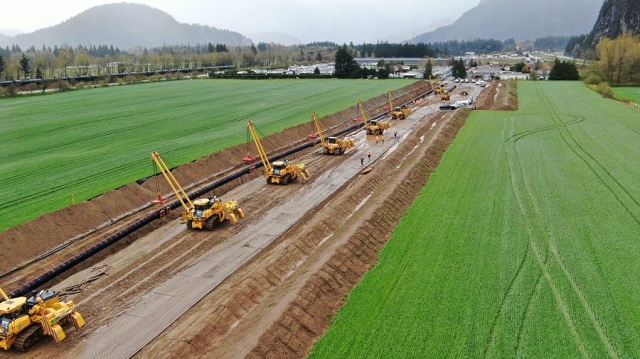
Mike Davies calls for ambition and reform to build a stronger Canada
A shift in ambition
A year after the Trans Mountain Expansion Project came into service, Mike Davies, Senior Director of Marine Development at Trans Mountain, told the B.C. Business Summit 2025 that the project’s success should mark the beginning of a new national mindset — one defined by ambition, reform, and nation building.
“It took fifteen years to get this version of the project built,” Davies said. “During that time, Canadian producers lost about $50 billion in value because they were selling into a discounted market. We have some of the world’s largest reserves of oil and gas, but we can only trade with one other country. That’s unusual.”
With the expansion now in operation, that imbalance is shifting. “The differential on Canadian oil has narrowed by about $13 billion,” he said. “That’s value that used to be extracted by the United States and now stays in Canada — supporting healthcare, reconciliation, and energy transformation. About $5 billion of that is in royalties and taxes. It’s meaningful for us as a society.”
Davies rejected the notion that Trans Mountain was a public subsidy. “The federal government lent its balance sheet so that nation-building infrastructure could get built,” he said. “In our first full year of operation, we’ll return more than $1.3 billion to the federal government, rising toward $2 billion annually as cleanup work wraps up.”
At the Westridge Marine Terminal, shipments have increased from one tanker a week to nearly one a day, with more than half heading to Asia. “California remains an important market,” Davies said, “but diversification is finally happening — and it’s vital to our long-term prosperity.”
Fixing the system to move forward
Davies said this moment of success should prompt a broader rethinking of how Canada approaches resource development. “We’re positioned to take advantage of this moment,” he said. “Public attitudes are shifting. Canadians increasingly recognize that our natural resource advantages are a strength, not a liability. The question now is whether governments can seize it — and whether we’ll see that reflected in policy.”
He argued that governments have come to view regulation as a “free good,” without acknowledging its economic consequences. “Over the past decade, we’ve seen policy focus almost exclusively on environmental and reconciliation objectives,” he said. “Those are vital, but the public interest extends well beyond that — to include security, economic welfare, the rule of law, transparency, and democratic participation.”
Davies said good policy should not need to be bypassed to get projects built. “I applaud the creation of a Major Projects Office, but it’s a disgrace that we have to end run the system,” he said. “We need to fix it.”
He called for “deep, long-term reform” to restore scalability and investment confidence. “Linear infrastructure like pipelines requires billions in at-risk capital before a single certificate is issued,” he said. “Canada has a process for everything — we’re a responsible country — but it doesn’t scale for nation-building projects.”
Regulatory reform, he added, must go hand in hand with advancing economic reconciliation. “The challenge of our generation is shifting Indigenous communities from dependence to participation,” he said. “That means real ownership, partnership, and revenue opportunities.”
Davies urged renewed cooperation between Alberta and British Columbia, calling for “interprovincial harmony” on West Coast access. “I’d like to see Alberta see B.C. as part of its constituency,” he said. “And I’d like to see B.C. recognize the need for access.”
He summarized the path forward in plain terms: “We need to stem the exit of capital, create an environment that attracts investment, simplify approvals to one major process, and move decisions from the courts to clear legislation. If we do that, we can finally move from being a market hostage to being a competitor — and a nation builder.”
-

 MAiD1 day ago
MAiD1 day agoDisabled Canadians increasingly under pressure to opt for euthanasia during routine doctor visits
-

 Alberta1 day ago
Alberta1 day agoPetition threatens independent school funding in Alberta
-
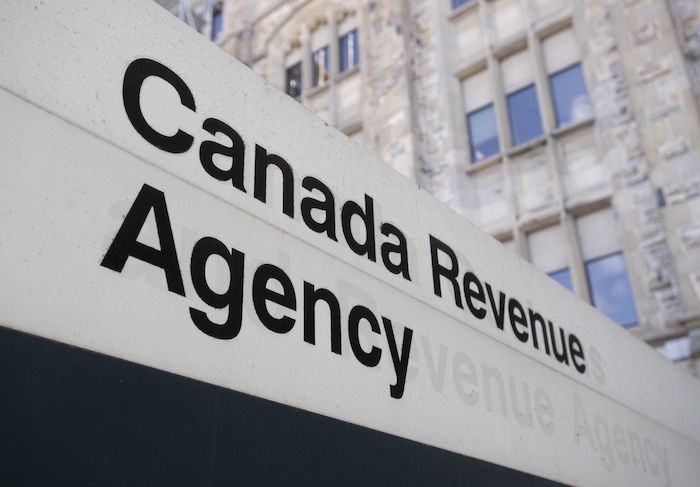
 Business1 day ago
Business1 day agoCanada Revenue Agency found a way to hit “Worse Than Rock Bottom”
-

 Digital ID1 day ago
Digital ID1 day agoToronto airport requests approval of ‘digital IDs’ for domestic airport travel
-
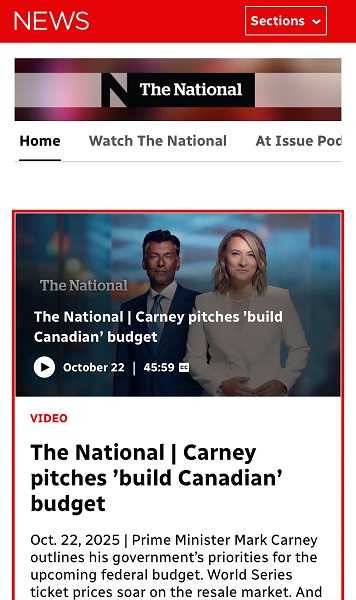
 Media1 day ago
Media1 day agoCarney speech highlights how easily newsrooms are played by politicians
-

 Business2 days ago
Business2 days agoTrans Mountain executive says it’s time to fix the system, expand access, and think like a nation builder
-
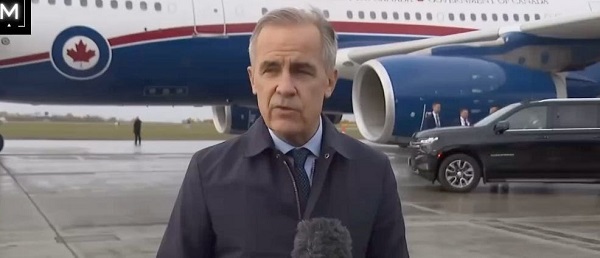
 Opinion1 day ago
Opinion1 day agoCarry-On Carney And The Trials Of Brian Peckford
-
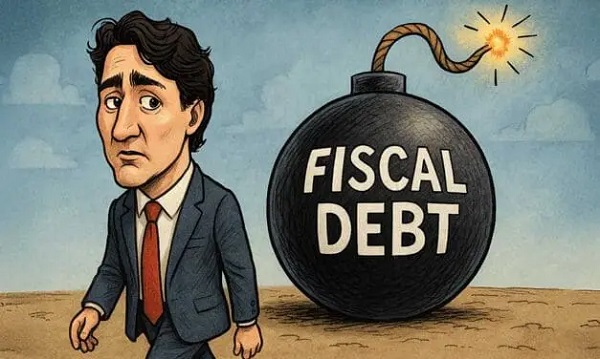
 Business2 days ago
Business2 days agoCanada is still paying the price for Trudeau’s fiscal delusions







